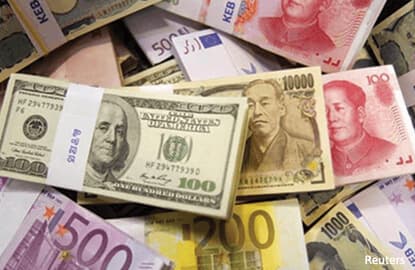
SINGAPORE (Sept 23): After its two-day Federal Open Market Committee (FOMC) meeting over 20-21 Sept, a divided Fed has decided to leave its policy rate unchanged – at least until December.
“September's policy inaction also fostered a mechanical reduction in the Fed's median projection for the policy rate. It continues a long-running dovish trend of successive downward revisions,” comments Daragh Maher, head of FX Strategy, US HSBC Securities (USA).
In a Wednesday report, HSBC Global Research outlines three likely consequences to result from the Fed’s latest non-rate hike announcement:
Weaker USD To Maher, such an addition to the Fed’s medium-term dovish tone is likely to weaken the US dollar (USD) modestly especially given how it strengthened earlier in response to the hawkish comments of some Fed speakers. He also expects the USD to weaken in G10 countries against the “risk on” currencies like the Australian dollar (AUD), New Zealand Dollar (NZD) and Swedish Krona (SEK).
“USD-Japanese Yen (JPY) is also likely to be a prominent mover as some of the JPY-bullish reaction to the underwhelming Bank of Japan (BoJ) meeting earlier can now be fully reflected in the price with Fed event risk out of the way,” says Maher.
EM FX rally Additionally, the strategist believes improving risk appetite as well as the relief of a non-surprise from the Fed will cause emerging market foreign exchange (EM FX) to rally. While HSBC would normally recommend Mexican Peso (MXN) as the leader,
Maher points out that uncertainty regarding the upcoming US election is likely to restrain it.
Instead, the bank’s ‘barbell’ strategy continues to recommend certain low-yielders such as Korean won (KRW) and the Taiwan dollar (TWD). High-yielding currencies such as the Indonesian ringgit (IDR) and Indian rupee (INR) may fare well too, says the strategist.
Rising demand for investment bullion Maintaining its view expressed in previous metal reports, HSBC believes that gold all the more stands to benefit from an extended delay on a rate hike. “The more dovish FOMC bias relieves the gold market of a strong upside barrier and we expect increased investment bullion demand,” states Maher.
To recap, the Fed on Thursday issued a release stating it will maintain the target range for the federal funds rate at 0.25-0.5%, such that the stance of monetary policy remains “accommodative, thereby supporting further improvement in labour market conditions and a return to 2% inflation”.
Seven members, including Fed Chair Janet Yellen, voted for the FOMC monetary policy action – whilst three members voted against it, preferring the target range of the federal funds rate to be raised to 0.5-0.75%.
Natixis Global Asset Management’s chief market strategist, David Lafferty, believes this 7-3 vote to be “highly unusual” but nonetheless more understandable by looking at the Fed’s mixed prognosis.
“The [Fed’s latest] statement modestly upgraded the outlook in terms of the balance of risks and noted continued improvement in the labour market. However, the continued sluggishness of the expansion warranted slightly downgrading their forward projections for growth, inflation, and by extension, rate hikes,” explains Lafferty in a Thursday statement.
“Also in the background looms a tightening presidential race whereby the committee can preserve some optionality by pushing off the rate hike until December,” he adds.
While a Wall Street Journal (WSJ) survey of economists showed that only 13% anticipated a hike at the September FOMC meeting, 74% are expecting a hike in December.